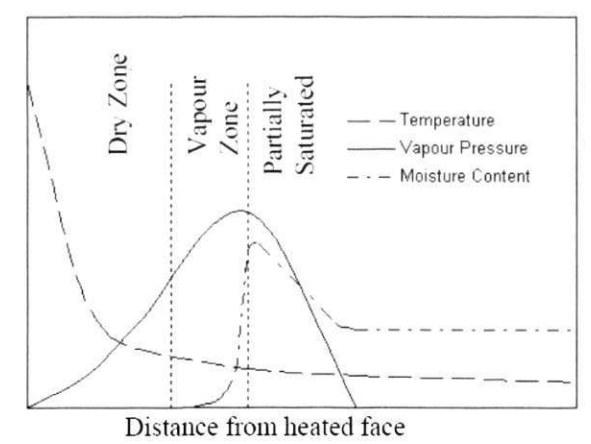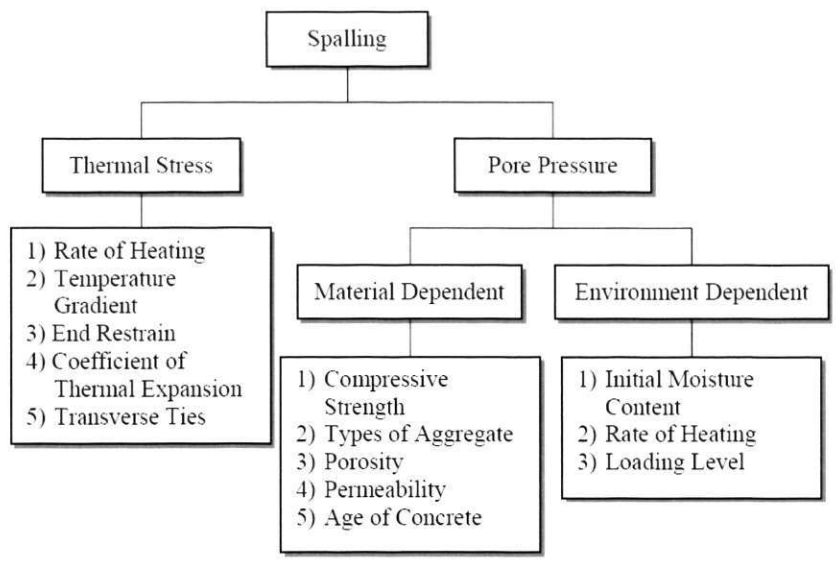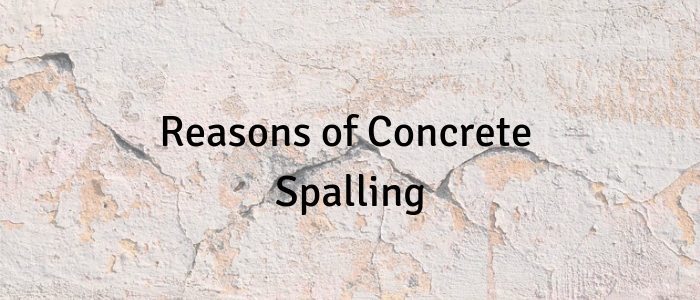Concrete Spalling
Currently, there are two mechanisms concerning the occurrence of spalling: 1- the pore pressure build up causes spalling in the cement matrix and 2- thermal and mechanical stresses.
In 1997, Anderberg gave an account on spalling caused by vapour pressure. The mechanism is believed to be the same for both High Performance Concrete (HPC) and Normal Strength Concrete (NSC). He defined three zones as illustrated in Figure 1 for a 1-D heating scenario: 1) dry zone, 2) vapour zone and 3) partially saturated zone. The water at the heated face starts to vaporize when temperature reaches 100 °C. A dry zone is created at the boundary of the heated face and the thickness of this layer increases rapidly in NSC than HPC. The temperature gradient rises sharply in this zone as water, being high in specific heat capacity, is vaporized and no longer exists to absorb the heat energy. Gas diffusion is also believed to increase rapidly with temperature.

A vapour zone immediately follows behind the dry zone. It is a zone where vapour and free water coexist together. Moisture content within the vapour zone rises and obstructs the vapour to migrate into the direction of the unheated face. This phenomenon is known as “moisture clog”. Vapour pressure starts to build up within the concrete even though the vapour continues to migrate in both directions (towards the heated and unheated face). Condensation is observed in the unheated face.
A possible criterion for spalling could exist when the tensile stress due to vapour pressure exceeds the tensile strength of the concrete. Anderberg also observed that spalling is progressive. Spalling will continue to occur until the tensile stress due to vapour pressure is less than the tensile strength of concrete. Essentially, this theory states that in low permeability porous materials, the flow of water and steam that occurs during heating is restricted and consequently vapor pressures increase in the pore structure to a point that the resulting skeleton stresses exceed the material strength.
Also, an experiment was made that shown that spalling can be caused by thermal stress. Initially, the sound of crack propagation can be heard during the first 3 to 10 minutes. Small pieces of concrete gets dislodged from the surface. Explosive spalling occurred at around 11 minute, which corresponds, to approximately 700 °C.
The mechanism of spalling can be classified into 2 main areas (thermal stress and pore pressure). The factors that influence spalling due to pore pressure can further be broken down into environmental and material dependent factors as shown in Figure 2 namely.

Reference: Anderberg, Y. (1997). “Spalling Phenomena of HPC and OC.” NIST SP 919, Nationallnstitute of Standards and Technology, Gaithersburg, MD, 69-73.
Read Also:
